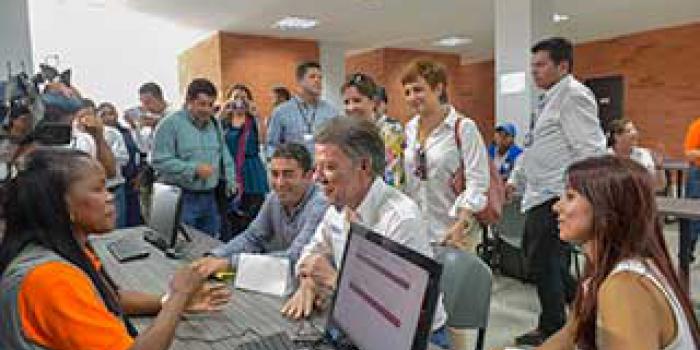
Colombia’s reparation process is the most comprehensive and successful in the world
‘Colombia is implementing the most successful reparation program in the world,’ said Victims Unit’s subdirector Iris Marín, in an international meeting on transitional justice and the Inter-American Court of Human Rights, held in Cartagena (Colombia).

‘Colombia is implementing the most successful reparation program in the world,’ said Victims Unit’s subdirector Iris Marín, in an international meeting on transitional justice and the Inter-American Court of Human Rights, held in Cartagena (Colombia).
During her presentation one the progress of the implementation of the public policy for victims, Marín said that the Victims and Land Restitution Law (Law 1448) is a judicial and political milestone in the country, since it acknowledges the existence of the armed conflict, the victims left by the conflict, and the responsibility of the State. It also addresses the need to repair the victims –who had not been taken into account-, because unlike the previous legal framework, it is based on the duty to guarantee Human Rights for all Colombians.
She highlighted that this act aims to comprehensively repair victims, which implies a process of reconstruction of their life projects, beyond the economic compensation, and it has both individual and collective measures. The Unit’s subdirector explained that 14% of the population has suffered some sort of victimizing event, which makes Colombia a unique case in terms of acknowledgment and reparation of victims. Harvard University defined the Colombian model as the most comprehensive reparation program in the world, and said it became a world referent.
At the moment, there are 5,548,431 victims subject to direct attention and reparation, according to the Single Registry of Victims. That is why the national government has already invested more than 20 trillion Colombian pesos in the public policy for victims. Up to 303 groups and communities are acknowledged as subject to collective reparations, and more than 107,000 victims have received psychosocial attention via different strategies.






